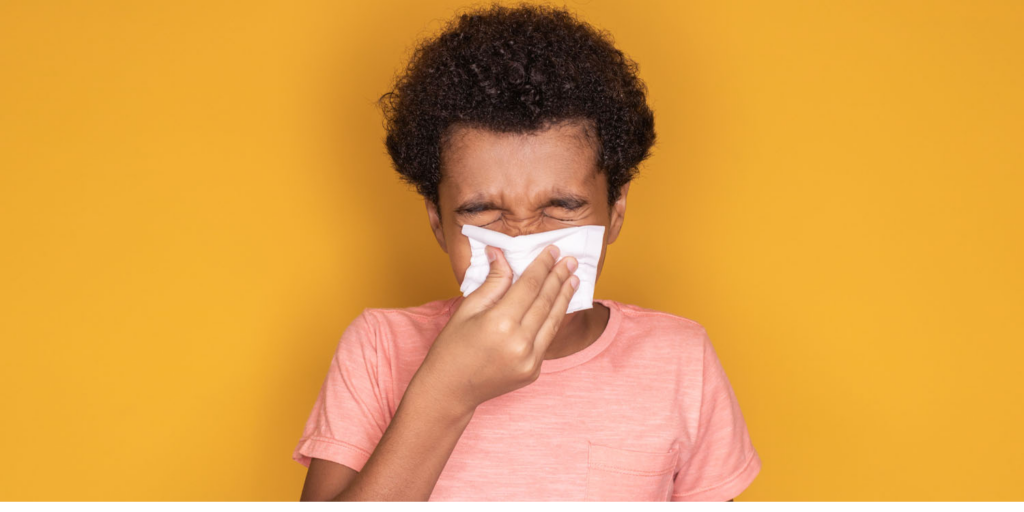From our friends at Legacy-GoHealth Urgent Care:

Pediatric respiratory infections typically spike during the winter months leading to “cold and flu season”. This is when everybody spends more time indoors, where germs are quickly shared, especially in schools, day cares and other social settings.
While these infections are often harmless and short-lived in older children, they can have dangerous consequences for infants or children with underlying medical conditions. Below are three potentially serious pediatric respiratory infections every parent should be aware of, including common symptoms and prevention tips.
1) Respiratory Syncytial Virus (RSV)/Bronchiolitis
Almost all children get respiratory syncytial virus (RSV) at least once before they are 2 years old. For most healthy children, RSV will be like a cold. However, some children can get very sick with RSV, particularly those who are very young or have underlying medical conditions.
Symptoms
RSV symptoms may include runny nose, cough, and fever. Symptoms generally last an average of 5-7 days. Symptoms are typically at their worst on days 3-5 of the illness and can quickly worsen for those who are high risk. RSV, along with other viruses, can cause another common respiratory illness called bronchiolitis.
Common symptoms of RSV and bronchiolitis in children can include:
• Runny nose
• Cough
• Fever
• Brief pauses in breathing
• Irritability
• Decreased appetite
• Trouble breathing
• Wheezing
Seek prompt medical care if a child develops signs of increased work of breathing:
• Audible wheezing or grunting
• Lethargy
• Nostril flaring
• Rapid breathing
• Visible retractions of chest muscles when breathing
Prevention
There is currently no vaccine for RSV or bronchiolitis. The best prevention is to teach children health hygiene habits at a young age, like handwashing, covering their nose and mouth when coughing and sneezing, avoiding touching their faces with unwashed hands, and keeping their distance from others who are sick.
2) Pertussis
Pertussis is a pediatric respiratory illness caused by a bacteria called Bordetella pertussis. It’s referred to as “whooping cough” because of the sound made when inhaling between coughs. This bacterial infection is treated with an oral antibiotic, however the cough can continue. Infants and young children are at a high risk of developing life-threatening complications because of immature immune systems and narrow airways.
Symptoms
Symptoms of this respiratory infection often look like a cold with runny nose, low-grade fever and cough for a week or two, but then symptoms worsen. Progressively, it can lead to these symptoms that require immediate attention:
• Blue lips or nails
• Exhaustion
• Increased work of breathing
• Lethargy
• Sudden, violent coughing attacks that can cause children to cough until they vomit, eat poorly and look ill
Prevention
There is a vaccine that prevents pertussis infections and transmission and is effective in protecting your child from pertussis. The pediatric version is called DTaP (diphtheria, tetanus and acellular pertussis). The vaccine for older children and adults is called Tdap. Most people need a Tdap booster every 10 years once they have completed their pediatric immunizations.
Parents and those will be in close contact with children less than 1 year old should received a Tdap booster. This helps lower the risk of spreading Pertussis to infants.
It is recommended that pregnant persons get a Tdap booster in each pregnancy since it allows mothers to pass along protection against this infection.
3) Croup
Croup is a predominantly viral infection that causes swelling of the larynx (voice box) and upper airway. The formal diagnosis is laryngotracheobronchitis. Children are most likely to get croup between 3 months and 5 years of age.
Symptoms
Symptoms of croup often begin like a cold and then more characteristic symptoms develop:
• A distinct-sounding barking cough
• Hoarse voice
• Stridor- which is a coarse noise heard with breathing in, especially when the child is crying or active.
Children with croup are often treated with an oral steroid that decreases inflammation in their larynx and upper airway.
In young children or children with underlying medical conditions, croup can cause more serious symptoms, including respiratory distress and hypoxia. These children typically need more intensive, hospital-based treatments in addition to steroids.
Prevention
There is no croup vaccine. The best prevention is practicing health hygiene and avoiding contact with sick people.
- Summer Camps with Space - April 16, 2024
- Portland Half-Day Summer Camps - April 16, 2024
- Summer Camps with Space - April 15, 2024




